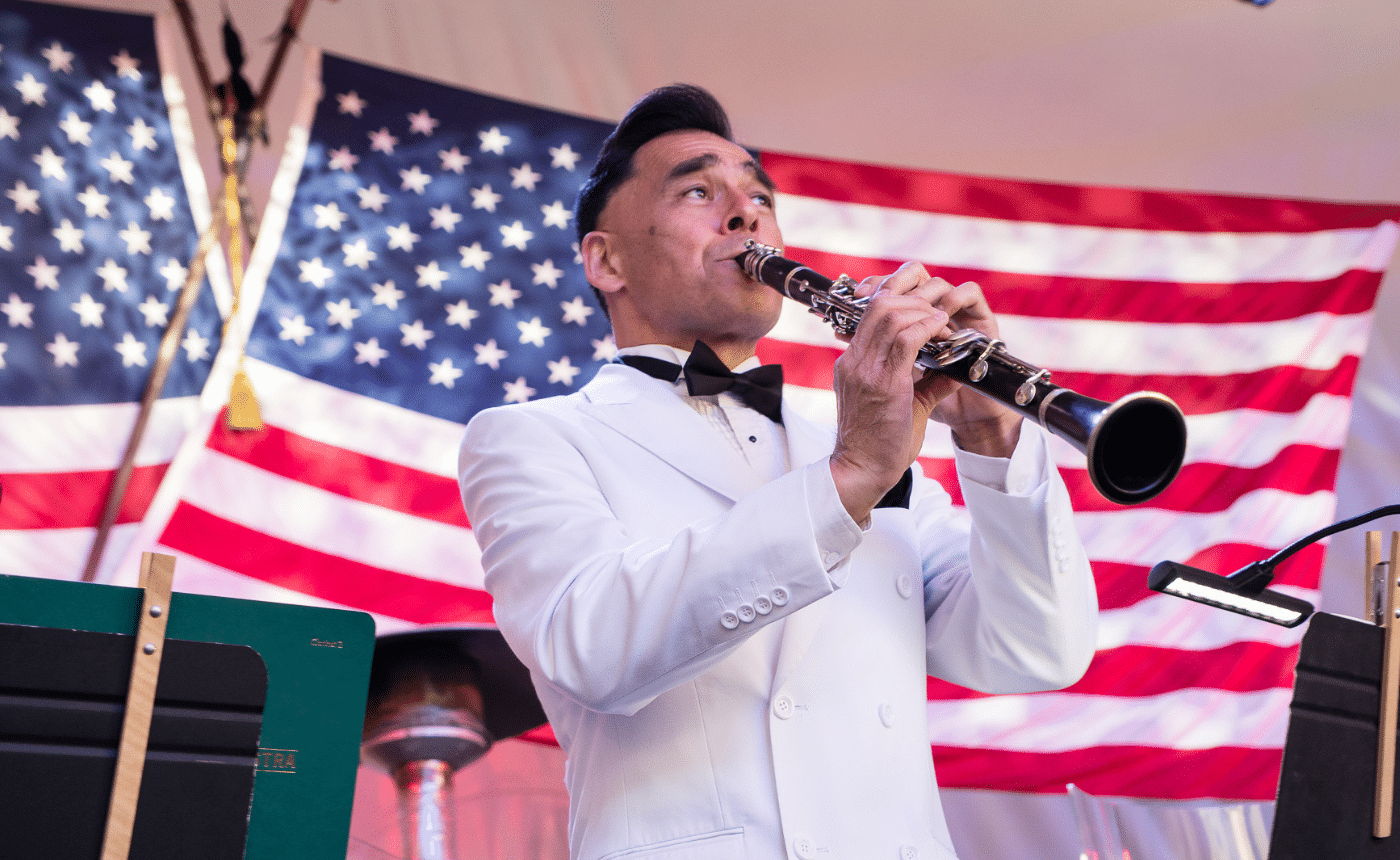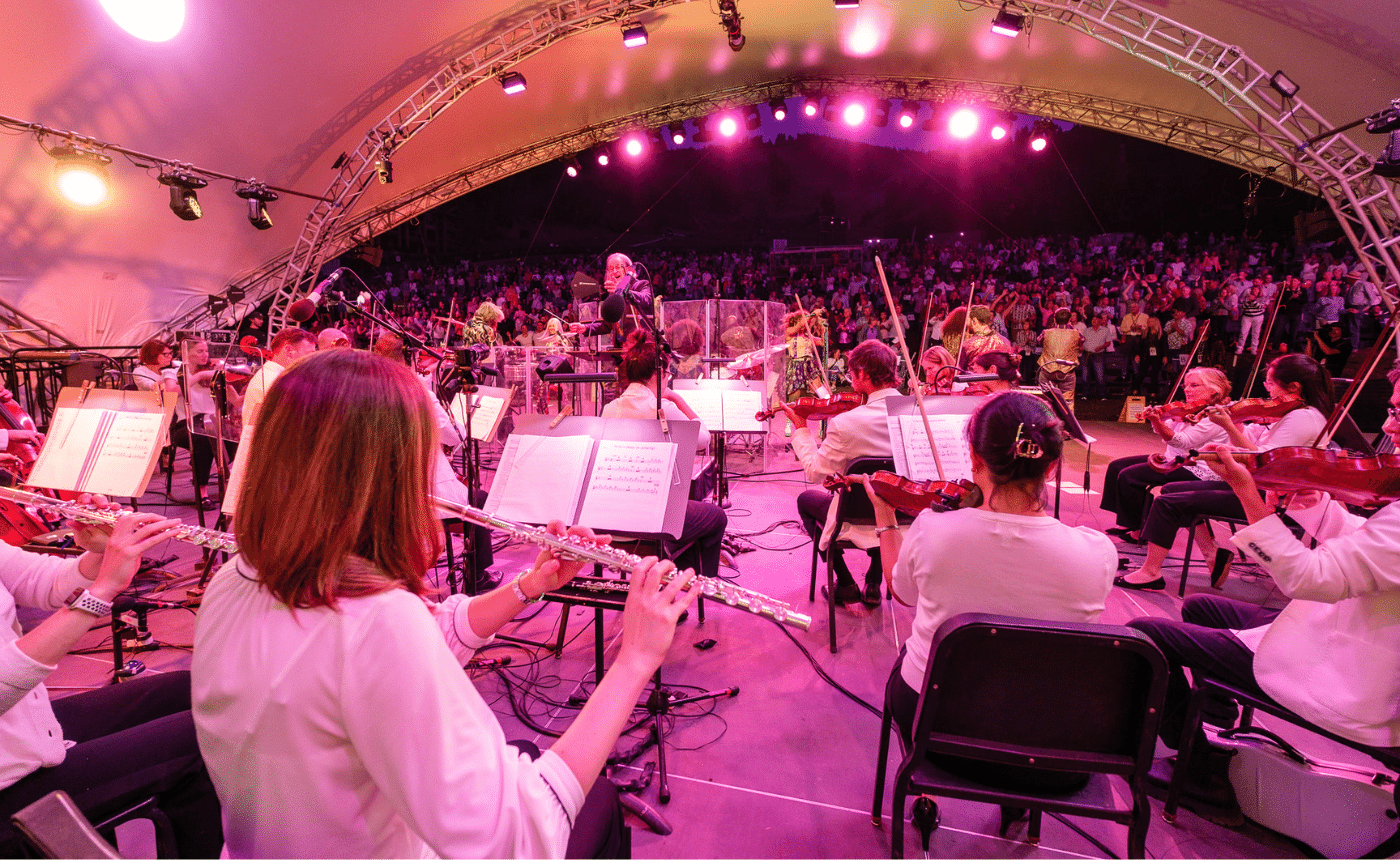Mahler Listening GuideSymphony no. 2 in C Minor (“Resurrection”)
by Bettie Jo Basinger
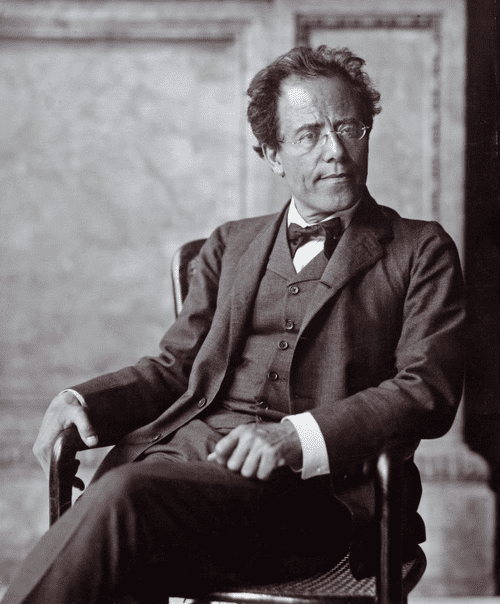
Gustav Mahler
Work History
Mahler composed his Second Symphony over a period of seven years. He began the first and second movements in January of 1888, around the same time that Die drei Pintos—a comic opera left unfinished at death by Carl Maria von Weber that Mahler had taken on the task of completing in 1887—premiered in Leipzig. Although his work on the second movement Andante yielded only a few melodies, the composer managed to draft the first movement in a mere ten months. Nevertheless, 1889 presented him with a series of tremendous setbacks. Mahler’s father, mother, and sister Leopoldine all died within a few months of one another, and an unfavorable response met the premiere of his First Symphony on 20 November 1889. Perhaps for these reasons—not to mention the demands of the conducting position he then occupied at the Hungarian Royal Opera—Mahler put aside all composition. He did not return to the project that would become Symphony no. 2 until the summer months of 1893. During the intervening years, the composer would not only relocate from Budapest to Hamburg in order to take up a conducting position at the latter’s Stadttheater (City Theater), but attempt to have the first movement performed and published as an independent symphonic poem entitled Todtenfeier (Funeral Rites).
Resumption of work on the Second Symphony coincided with the composer’s continued interest in Des Knaben Wunderhorn (The Boy’s Magic Horn) settings as early as 1887. He commenced writing the song “Des Antonius von Padua Fischpredigt” (“St. Anthony of Padua’s Sermon to the Fishes”) for voice and piano in July of 1893 while simultaneously creating a purely orchestral version of the same material; the latter, combined with a trio section based on ideas absent from the vocal rendition, became the symphony’s third movement. Likewise, “Urlicht” (“Primal Light”), another Wunderhorn text set the previous year for voice and piano, received orchestral accompaniment, and the composer also expanded the Andante’s themes (abandoned as sketches back in 1888) into a complete movement. These would become the fourth and second movements respectively. Thus, Mahler had finished the internal movements by August of 1893, and during the following winter, he revealed to his friend Josef Foerster that he had begun a new symphony.
Yet the piece still lacked a finale. Inspiration for this movement did not come to Mahler until he attended the funeral for his fellow Hamburg conductor Hans von Bülow (1830-1894) on 29 March 1894. Even though he had already been considering a choral close for the symphony, this somber event provided the composer with a textual basis for the last movement when the words of Friedrich Gottlieb Klopstock’s (1724-1803) “Auferstehen” (“Resurrection”) sounded from the organ loft. (The poet intended these lines for singing to a pre-existing melody, such as the Lutheran congregational hymn Jesus Christus, unser Heiland [Jesus Christ, our Savior], though the actual tune Mahler heard remains unknown). To the first two stanzas of Klopstock’s lyric the composer appended twenty-seven lines of his own devising, and with this poetry in hand, Mahler created a monumental movement before three months had passed.
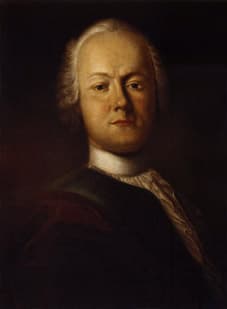
Friedrich Gottlieb Klopstock, as painted by Johann Caspar Füßli (1706-1782) in 1750.
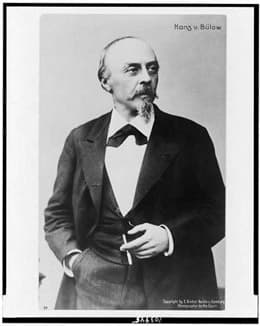
Hans von Bülow, as photographed by Leonhard Berlin-Bieber (1841-1931) between 1880 and 1894.
The texts of the vocal fourth and fifth movements (translated in connection with the listening guides below) concern the gift of eternal life obtained through the assumption of the human soul. The notion of resurrection presented in these poems conforms to religious traditions presented in both the New Testament and Tanakh (i.e., the Written Torah, which essentially corresponds to the Old Testament). However, a programmatic connection to the Unetanah Tokef, a prayer that features prominently in the liturgies of Rosh Hashanah and Yom Kippur, potentially strengthens the Jewish associations of the symphony. In connection with a Dresden performance of the piece on 20 December 1901, the composer prepared a programmatic summary of the work, and it twice mentions an internal voice that a few commentators believe recalls the “still small voice” that announces the day of judgment (i.e., Yom Kippur) in the Unetanah Tokef. Mahler’s program has this internal voice questioning the meaning of life and death in the first movement; for the fourth movement “Urlicht,” it articulates the desire to unite with God in the afterlife; and the prose describing the finale then depicts the Apocalyptic Day of Judgment in a series of scenes that parallels some of the imagery found in the Unetanah Tokef. Because Mahler did not convert to Catholicism until 1887—three years after the completion of this piece— the possibility of a Jewish influence in Symphony no. 2 should not seem surprising, although the 1901 program postdated his acceptance of the Christian faith. Several scholars nonetheless view this work as part of a ten-year process of religious assimilation, and for these interpreters, the chorale-like passages of even his First Symphony already point to the composer’s conversion. But regardless of where Mahler stood in terms of his “official” involvement with either Judaism or Catholicism when he composed the Second Symphony, his program for the finale departs from the both the Jewish and Christian conceptions of God at the Last Judgment. Despite the trembling of the earth, the dead rising from their graves, and the sounding of trumpets that his program places at the end of the world, Mahler’s God never actually judges. Instead, love illuminates and blesses all.
The composer also provided programmatic descriptions of the second and third movements in 1901, as well as in prior communications with friends. (Complete translations of the three programs exist here.) The materials written in association with the 1901 Dresden performance characterize the Andante as an alternation of happy and sad memories (specifically of love and lost innocence), while associating the third movement’s scherzo with “unbelief” and despair that lead to a cry of desperation. More precise detail for the scherzo also emerges from two earlier programs that the composer shared with the violinist Natalie Bauer-Lechner (1858-1921) and the critic Max Marschalk (1863-1940) in 1896. Both of these scenarios compare the third movement to watching a dance without hearing the accompanying music; to Mahler, this act represents a loss of identity and meaning, and in the music, it leads to a cry of disgust.
Both of the 1896 programs also link the Second Symphony to the death, life, and resurrection of a heroic individual (whereas the 1901 version refers only to a well-loved person). The second of these two programmatic depictions, contained in a letter to Marschalk dated 26 March 1896, reiterates that Mahler had formerly called the first movement Todtenfeier. Although this missive fails to clarify the reasoning behind the Todtenfeier designation, the name seems appropriate for music that evokes a funeral march. Even so, Mahler may have assigned the title out of programmatic impulses. In 1888, the epic poem Dziady (Forefather’s Eve) by the eminent Polish writer Adam Mickiewicz (1798-1855) appeared in German translation as Todtenfeier. Siegfried Lipiner (1856-1911), a close friend of Mahler’s, produced this translation, and portions of the poetic narrative resembled the composer’s personal situation at the time of its publication.
Dziady falls into four sections, with the first containing only poetic fragments published after Mickiewicz’s death. The second portion describes an old Slavic festival (i.e., Forefather’s Eve) in which the living set out a feast for the souls of the deceased who have not yet departed from the temporal world. After Mickiewicz explores Polish nationalism in the third section of the poem—which constitutes the heart of the epic but has no bearing on Mahler’s symphony—the fourth relays the tale of Gustav, who committed suicide when his beloved Maria married another man. This act has condemned him, forcing his spirit to wander the earth until Maria’s death, at which time she will transform into an angel who will carry Gustav’s soul to Heaven. Because Mickiewicz had himself fallen in love with his own Maria (i.e., Maria Wereszczak)—who, like her fictional counterpart, married another man—this portion of Dziady contains autobiographical elements. Similarly, Mahler had become romantically involved with a married woman when he began composing the Todtenfeier music that would eventually become the first movement of Symphony no. 2; coincidentally, even his name, when combined with that of his 1888 beloved—Gustav Mahler and Marion von Weber—suggests the ill-fated pair of Mickiewicz’s epic.
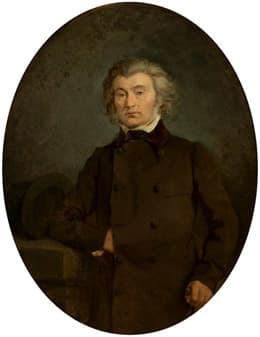
Adam Mickiewicz, as painted by Aleksander Kaminski in 1850.
Yet in the end, Mahler chose not to associate his first movement with Todtenfeier. The idea of death, lost love, and resurrection as detailed in the 1901 program actually corresponds to he Mickiewicz storyline in many respects, but by replacing the redemption of Gustav’s soul with the resurrection of the human soul—whether Jewish or Christian—the composer actually broadens the “meaning” of his Second Symphony. And he did not even need to summarize this “content” in a program in order to convey it to the audience: the texts sung in the last movements encapsulate the message, as does the affective trajectories of the music. Presumably the composer realized this after the Dresden performance, since he never distributed a programmatic description at a performance of the symphony.
Approximate Time in performance: 85-90 minutes
Instrumentation: 4 flutes, with all doubling on piccolo; 4 oboes, with 2 alternating on English horn; 3 clarinets, with 1 player alternating on bass clarinet; ; 2 E-flat clarinets, with 1 player altering on clarinet; 3 bassoons, with 1 player alternating on contrabassoon; 10 French horns, with 4 playing offstage; 8-10 trumpets, with the 4-6 playing offstage; 4 trombones; Tuba; 7-9 timpani, 6-8 played onstage by 3 percussionists and 1 offstage; 2 pairs of cymbals, 1 pair offstage; 2 triangles, 1 offstage; Side drum; Glockenspiel; 3 bells, specifically steel rods with deep, non-pitched tones; Tam-tam, one high and another low; Bass drum, 1 offstage played by a “Rute” or switch; Harp; Organ; Violins; Violas; Cellos; Basses, several with low C-string; Soprano solo; Alto solo; Sopranos; Altos; Tenors; Basses
Listening Guide for the First Movement
The Second Symphony begins with an ominous tremolo, out of which fragmentary scales come rumbling from the basses. These give way to halting arpeggios, over which the main melody of the first movement’s sonata form enters in the oboes and English horn. This material opens with pitches taken from the Gregorian chant “Crux fidelis” (“Faithful cross”)—using the same notes that Mahler had, in fact, quoted in the finale of his First Symphony—and it then adopts gestures from the introductory bass line. The tune’s march-like rhythms, slow speed, minor key, and dark timbre all unite to imbue the passage with the character of a funeral march.
After a short yet mournful line in the woodwinds, the violins emerge with a rising melody in the major mode. Such lyricism proves ephemeral amidst a funeral march, however: both the bass scales and oboe theme briefly recur in their original minor key before the composer brings in a third idea. A major-mode harmonization of “Crux fidelis” launches this new material, and its continuation clearly derives from the rhythms of the funeral march; thus, the music easily slips back into darkness and despair for the conclusion of the exposition, as evoked by the minor key, harsh trumpet timbre, and fragments of the opening bass line.
Another lyrical melody in the strings starts the development section. A series of new pastoral ideas soon follow, including a tranquil horn duet and a descending figure in the English horn that recalls the portion of Wagner’s Die Walküre (The Valkyrie) in which Odin puts Brünnhilde into a magical sleep. But sweeping figures in the strings, as well as brass fanfares, soon belie the calm. Several similar exchanges occur over the course of the development. Lyricism regularly alternates with grim proclamations of a minor-mode variant of “Crux fidelis,” and even the occasional brass fanfare resounds in a major key to hint at transcendent emotion yet to come.
Yet the opening bass scales—now punctuated by crashes in the percussion and brass—reappear before the development concludes. A sighing English horn signals the return of fragments of the funeral march, in addition to a broader melody stated in the trumpet. The latter then yields the spotlight to a quartet of French horns, which anticipates the symphony’s finale by presenting both a new idea based on the Gregorian chant “Dies irae” (“Day of Wrath”)—the text of which bears a similarity to the Unetanah Tokef in that it depicts the Last Judgment—as well as a motive that Mahler will ultimately set to the word “Auferstehen” (“resurrection”). Nevertheless, the anxiety and anguish associated with the funeral march demarcate the end of the development section, as do dramatic descending scales, the reemergence of the minor-mode version of “Crux fidelis,” aggressive rhythms in the brass, and poignant dissonance.
The recapitulation that ensues closely follows the lines of the exposition, at least until the lyrical second theme. Here the composer also recalls some of the pastoral ideas he initially presented in the development. Interestingly, Mahler marked this portion of the score as “Meerestille” (“calm sea”) on his original manuscript, presumably in reference to the famous poem of that title by Johann Wolfgang von Goethe (1749-1832). Although Mahler left this indication off of the published version of Symphony no. 2 (as he did a few other programmatic associations appearing on the autograph), the designation aptly describes the placid nature of this passage, even if its maritime imagery has nothing to do with either the Todtenfeier scenario, or the texts sung in the fourth and fifth movements.
Because the composer omits the major-mode version of “Crux fidelis” from the recapitulation, the end of this portion of the sonata form also departs from the model of the exposition. Mahler now synthesizes the materials of his funeral march with the minor-key variation of “Crux fidelis” to make an extended, quiet close for the first movement. Only a succinct coda consisting of a descending chromatic scale in the full orchestra temporarily restores a more forceful, assertive mood before the music fades out.
Listening Guide for the Second Movement
The score specifies a pause of at least five minutes after the first movement. Following this, an Andante moderato marked “Sehr gemächlich, nie eilen” (“Very leisurely, never rushing”) begins, and it creates a tremendous contrast with everything heard previously. In 1899, Mahler conveyed to Bauer-Lechner that he considered this discontinuity a fault in the symphony. Evidently Claude Debussy and Paul Dukas agreed: the second movement so displeased them during a 1910 performance that they left the concert hall, much to Mahler’s displeasure.
Overall, the layout of the second movement alternates between two musical ideas. The strings open the Andante with the first of them: a “grazioso” (“graceful”) Ländler [insert link to definition of LÄNDLER at http://www.utahsymphony.org/blog/2014/09/romantics-terminology/] in the major mode. Approximately ninety seconds later, another melody appears. Its detached articulation and extremely soft volume impart a playful character, while the minor key clearly distinguishes the tune from the beginning of the movement.
The woodwinds twice present a lyrical passage on top of overlapping statements of this second idea before the music rises to a peak. This, in turn, subsides into a reemergence of the Ländler. The second melody follows soon thereafter, but it extends to a greater length and reaches a larger climax—facilitated through the addition of the brass and timpani—this time around. Yet once again, it yields to the Ländler, which quietly rounds off the Andante.
Listening Guide for the Third Movement
As noted in the Work History above, the third movement derives from Mahler’s setting of the Wunderhorn text “Des Antonius von Padua Fischpredigt.” This poem (given below) satirizes the legend of St. Anthony preaching to the fish in the river. The fish symbolize a congregation that listens attentively, but upon completion of the service, returns to daily life without have taken to heart the priest’s spiritual message. And Anthony too emerges as an ironical figure, since he seems perfectly content to deliver his sermon to a flock that cannot understand him.
Antonius zur Predigt
Die Kirche findt ledig.
Er geht zu den Flüssen
Und predigt den Fischen!
Sie schlag’n mit den Schwänzen!
Im Sonnenschein glänzen!
Die Karpfen mit Rogen
Sind all’ hierher zogen,
Hab’n d’Mäuler aufrissen
Sich Zuhörn’s beflissen!
Kein Predigt niemalen
Den Fischen so g’fallen.
Spitzgoschete Hechte,
Die immerzu fechten,
Sind eilends herschwommen,
Zu hören den Frommen!
Auch jene Phantasten,
Die immerzu fasten:
Die Stockfisch ich meine,
Zur Predigt erscheinen.
Kein Predigt niemalen
Den Stockfisch so g’fallen.
Gut’ Aale und Hausen,
Die vornehme schmausen,
Die selbst sich bequemen,
Die Predigt vernehmen!
Auch Krebse, Schildkroten,
Sonst langsame Boten,
Steigen eilig vom Grund,
Zu hören diesen Mund!
Kein Predigt niemalen
Den Krebsen so g’fallen.
Fisch große, Fisch kleine,
Vornehm und gemeine,
Erheben die Köpfe
Wie verständ’ge Geschöpfe!
Auf Gottes Begehren
Die Predigt anhören!
Die Predigt geendet,
Ein jeder sich wendet.
Die Hechte bleiben Diebe,
Die Aale viel lieben;
Die Predigt hat g’fallen,
Sie bleiben wie Allen!
Die Krebs’ geh’n zurücke;
Die Stockfisch’ bleib’n dicke,
Die Karpfen viel fressen,
Die Predigt vergessen!
Die Predigt hat g’fallen.
Sie bleiben wie Allen!
Antonius at sermon
Finds the church empty.
He goes to the rivers
And preaches to the fishes!
They whip their tails
Glistening in the sunshine!
The carp with roe
All are drawn here
Mouths wide open,
Intent listeners!
No sermon ever
Pleased the fish so!
Sharp-mouthed pike
That fight all the time
Swam here in a hurry
To hear the piety!
Even those oddities
That fast all the time,
I mean the stockfish,
Appear at the sermon.
No sermon ever
Pleased the fish so!
Good eels and sturgeon
That elegantly feast,
They force themselves
To hear the sermon!
Also crabs, turtles,
Usually slow runners,
Rise urgently from the ground
To hear this mouth!
No sermon ever
Pleased the crabs so!
Fish large, fish small,
Noble and common,
Raise their heads
Like intelligent creatures!
At God’s wish
They listen to the sermon!
The sermon ended,
Each one turns.
The pike remain thieves,
The eels great lovers:
The sermon has pleased,
But they all remain as before.
The crabs go backwards;
The stockfish stay plump,
The carp devour many,
Forgetting the sermon!
The sermon pleased,
But they all remain as before!
In the vocal versions of the Lied, the instruments (whether piano or orchestral) evoke the constant motion of the swimming fish, while the singer simultaneously relays the text and suggests the preaching of St. Anthony. (A recording of the Lied exists at this link. The symphony movement, however, leaves out most of the vocal melody. Mahler instead focuses on creating a sense of restless energy through constant rhythmic motion, swirling melodies, and dissonance. As the turning melodic lines move through various instruments, fragments of a slower-moving tune (i.e., the vocal line of Lied) occasionally emerge, often in the woodwinds.
A rumble in the brass and timpani—followed by a protracted whistle in the piccolo and flute—heralds the contrasting central portion of the movement. The materials Mahler next presents do not occur in the vocal “Fischpredigt,” though the section begins with a brass fanfare that clearly references the composer’s First Symphony. Restatement of this fanfare leads to the only lyrical passage in the entire movement, which Mahler marks as “Sehr getragen und gesangvoll” (“Very solemn and songlike”). The trumpets carry the melody here, with the support of undulating strings. But the respite proves short-lived, and a varied restatement of the Lied returns.
The composer most significantly departs from the previous statement of the “Fischpredigt” by interpolating further recollections of Symphony no. 1. These culminate in a dissonant outcry that constitutes the climax of the third movement. Mahler’s withdrawn programs describe this moment as either an outburst of despair or a cry of disgust, and these metaphors aptly characterize the passage. And as the Lied resumes, the tension abates, so that the composer may subtly anticipate motives that will figure prominently in the finale.
Das ist ein Flöten und Geigen
Trompeten schmettern darein;
Da tanzt wohl den Hochzeitreigen
Die Herzallerliebste mein.
Das ist ein Klingen und Dröhnen,
Ein Pauken und ein Schalmei’n;
Dazwischen schluchzen und stöhnen
Die lieblichen Engelein.
There is fluting and fiddling
Trumpets blare in it
Here dances the wedding dance
My dearest.
There is a ringing and booming
A drumming and a sounding of shawms;
Between them sob and moan
The sweet angels.
Yet before the third movement concludes, Mahler not only returns to the “Fischpredigt” in its original guise; he also elusively quotes—in his final measures—the last bars of the ninth song, “Das ist ein Flöten und Geigen” (“There is a Fluting and Fiddling”), of Robert Schumann’s song cycle Dichterliebe (A Poet’s Love). Considering that the program Mahler outlined for Marschalk in 1896 specifies that the hero mourned in the opening movement of Symphony no. 2 equates to the same individual that his First Symphony depicts, the allusion to the latter piece in the former work seems a natural choice. In contrast, “Das ist ein Flöten und Geigen” connects to the Second Symphony by means of the discarded Todtenfeier association, as well as the composer’s depiction of the third movement as watching a dance without participating in the festivities in several of his verbal programs: Dichterliebe, like Dziady, narrates the sorrows of a man whose beloved choses to marry another, and the text of “Das ist ein Flöten und Geigen” contrasts the merry sounds of a wedding dance with the anguish felt by the protagonist (see below).
Listening Guide for the Fourth Movement
Like the third movement, the fourth began as setting of a Wunderhorn poem. In this case, however, Mahler decided to use both the text and music of “Urlicht,” rather than discarding the words as he did with the “Fischpredigt.” Thus, the composer introduces the human voice—via an alto soloist—after approximately forty-five minutes of purely instrumental music.
“Urlicht” expresses a longing for a spiritual union with God, whose love grants eternal life (see text below). Mahler separates the first line of text from the remainder of the poem, using it to initiate the movement. Following a choral-like passage played by a brass choir—which the composer requests sit at the rear of the orchestra—the alto sings the second, third and fourth lines of poetry. Chromaticism now infiltrates the vocal line, which gradually rises in pitch and constantly fluctuates meter. A solo oboe then closes off this first portion of the movement.
A contrasting central section then begins in a minor key. As clarinet, harp, and glockenspiel mark off regular increments of time, the voice delivers the fifth, sixth, and seventh lines of text at a slightly quicker tempo. A solo violin, as well as the flute, also feature prominently in this portion of “Urlicht.”
No clear pause separates the middle of the movement from the varied restatement of the opening material. Instead, Mahler sets the eighth and ninth line with a “zart drängend” (“gently urging”) figure. As the alto moves to the final line of the poem, however, the melody first heard in conjunction with the fourth line of text returns. The unexpected recurrence of this gesture produces not only the movement’s climax, but it closes the movement in a subtle and delicate manner.
O Röschen rot,
Der Mensch liegt in größter Not,
Der Mensch liegt in größter Pein,
Je lieber möcht’ ich im Himmel sein.
Da kam ich auf einen breiten Weg,
Da kam ein Engelein und wollt’ mich abweisen,
Ach nein, ich ließ mich nicht abweisen.
Ich bin von Gott, ich will wieder zu Gott,
Der liebe Gott wird mir ein Lichtchen geben,
Wird leuchten mir bis in das ewig selig Leben.
O little rose red
Humanity lies in greatest need,
Humanity lies in great agony,
Ever I would prefer to be in Heaven.
Then I came upon a wide path
There came an angel who wanted to turn me away.
But no, I did not let myself be turned away.
I am from God, I want to return to God,
The loving God will give me a little light,
Which will light me into eternal, blessed life.
Listening Guide for the Fifth Movement
Many scholars interpret the fifth movement as another example of sonata form, with instrumental expositional and developmental sections, followed by a choral recapitulation. Because Mahler based the vocal portion of the finale on the same materials as its orchestral beginning, this scenario does actually describe the shape of the movement to a certain extent. However, the composer incorporates elaboration of his themes—a process normally associated with the development—in the exposition, and the act of fitting words to instrumental melodies will also necessitate substantial alteration of those materials in the recapitulatory portion of the score.
After a terrifying fanfare that evokes the introduction of the choral finale to Beethoven’s Ninth Symphony, Mahler introduces the movement by means of a theme built from falling fifths, ascending scales, and descending triplets. An offstage horn call then inverts the fifths to announce the expositional portion of the form, where the “Dies irae” and “Auferstehen” materials anticipated in the first movement now figure prominently. Another gesture places pleading sighs in woodwinds above string tremolos: Mahler will set the text “O glaube” (“Oh believe”) to these passionate entreaties much later in the finale.
The low brass signals the end of the exposition with varied restatements of the “Dies irae” and “Auferstehen” motives. This builds in intensity and eventually erupts in triumphant fanfares that derive from the introductory fifths and descending triplets. Beneath all this orchestral brilliance, however, trombones sound the “Auferstehen” fragment to hint at the darkness and fright that opened the movement. Drum rolls then declare the start of the developmental section, which commences with the recurrence of the terrifying and dissonant introduction.
The center of the movement combines its main materials in a seemingly endless variety of ways. Mahler also transforms the characters of his themes into a number of unexpected guises. For example, the “Dies irae” becomes a serious, though initially upbeat, march—over which the composer will have the trumpets superimpose a solemn, chorale-like variation of the same melody. And in the midst of all this, the occasional quotation of “Crux fidelis” materializes, before another recollection of the introduction brings the music to a grinding halt.
The development now resumes with the “O glaube” material, which grows in intensity as offstage fanfares join in. Mahler hints at a bit of lyricism before the tempo accelerates, the volume rises, and the level of dissonance increases. Horn fanfares first surface from this din—followed by the return of the falling fifths, ascending scales, and descending triplets—before the recapitulatory portion of the movement commences.
In Mahler’s 1901 programmatic description of the fifth movement, a nightingale immediately precedes his image of a chorus of saints and heavenly beings singing “Auferstehen.” Thus, a flute—marked “like a bird call” (“wie eine Vogelstimne”)— accompanies the recapitulation of the first portion of the exposition. Following this and representing the aforementioned angelic host, the chorus now intones the opening stanza of Klopstock’s poem, extending the short “Auferstehen” motive into a fully-realized chorale.
An orchestral interlude ensues, but the chorus interrupts in order to deliver Klopstock’s second stanza. Yet this time Mahler allows the instruments to conclude their subsequent interlude, thereby demarcating the end of Klopstock’s text and the start of his own. With the entrance of the words “O glaube” in the alto solo, the composer returns to the pleading sighs he introduced towards the end of the expositional portion of the movement. Nevertheless, a soprano quickly assumes the melody before the chorus again returns with the “Auferstehen” material, though now singing Mahler’s text and forcefully accompanied by the low brass.
The alto voice emerges from the chorale to usher in a passage marked “Mit Aufschwung” (“With uplift”). The soprano soon joins, and the vocal duet briefly references the melody Mahler used to set the pivotal text of “Urlicht”: “Ich bin von Gott, ich will wieder zu Gott,” (“I am from God, I want to return to God”). Following this, the chorus presents overlapping entries of the descending-triplet material, a motive that had remained the property of the orchestra until this point in the movement. As the buildup of these gestures nears its peak, another instrumental theme—the pairing of the falling fifths and ascending scales—resounds in the chorus and horns. The organ joins for the final statement of the “Auferstehen” chorale in the chorus and brass, and bells finally chime as the brass instruments proclaim the end of the symphony.
KLOPSTOCK’S TEXT
Aufersteh’n, ja aufersteh’n wirst du,
Mein Staub, nach kurzer Ruh!
Unsterblich Leben
Wird der dich rief dir geben.
Wieder aufzublüh’n wirst du gesät!
Der Herr der Ernte geht
Und sammelt Garben
Uns ein, die starben.
MAHLER’S CONTINUATION
O glaube, mein Herz, o glaube:
Es geht dir nichts verloren!
Dein ist, was du gesehnt!
Dein, was du geliebt, was du gestritten!
O glaube:
Du wardst nicht umsonst geboren!
Hast nicht umsonst gelebt, gelitten!
Was entstanen ist, das muß vergehen!
Was vergangen, auferstehen!
Hör’ auf zu beben!
Bereite dich zu leben!
O Schmerz! Du Alldurchdringer!
Dir bin ich entrungen!
O Tod! Du Allbezwinger!
Nun bist du beqwungen!
Mit Flügeln, die ich mir errungen
In heißem Liebesstreben
Wer’ ich entschweben
Zum Licht, zu dem kein Aug’ gedrungen! `
Sterben werd’ ich, um zu leben!
Aufersteh’n, ja aufersteh’n wirst du,
Mein Herz, in einem Nu!
Was du geschlagen,
Zu Gott wird es dich tragen!
Rise again, yes, you will rise again.
My dust, after a short rest!
Immortal life
He who called you will give to you.
To blossom again you are sown!
The lord of the harvest goes
And gathers, like sheaves,
We who died.
O believe, my heart, o believe:
Nothing is lost to you!
It is yours, what you desired.
It is yours, what you loved, what you struggled for.
O believe:
You were not born in vain!
You have not lived, suffered in vain!
What came into being, it must cease to be!
What passed away, it must rise again!
Stop trembling!
Prepare yourself to live!
Oh grief! You all-penetrator!
I am forced to you
O death! You all-conqueror!
Now you are defeated!
With wings that I won for myself
In fervent pursuit of love
I will waft away
To the light that no eye has penetrated
I shall die in order to live.
Rise again, yes, you will rise again,
My heart, in a moment!
What you bested
It will carry you to God!
About the Author
Bettie Jo Basinger has been teaching at the University of Utah since 2007. She has both a Master’s Degree and PhD in Musicology—as well as a Bachelor’s in French Horn Performance—from UCLA. Although her research interests include the entire symphonic repertoire, Dr. Basinger specializes in the orchestral program music of the nineteenth century, particularly the symphonic poems of Franz Liszt.




